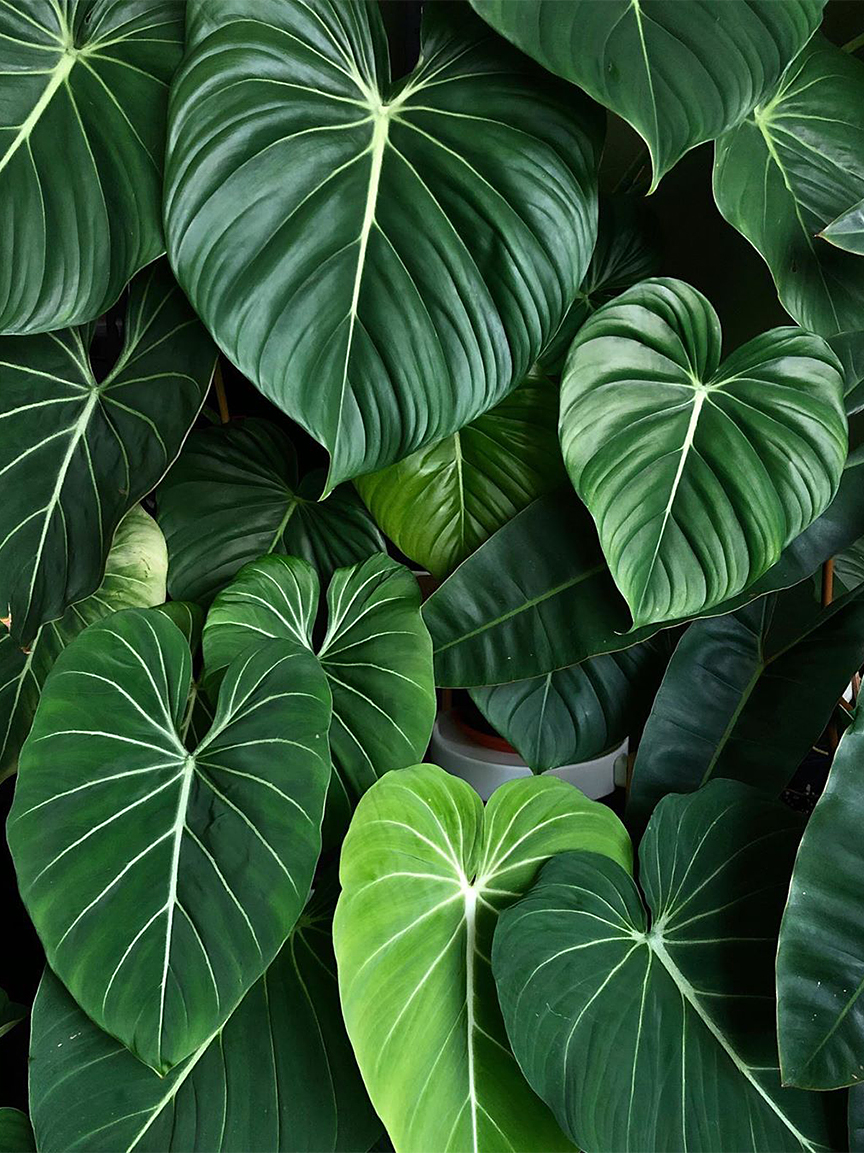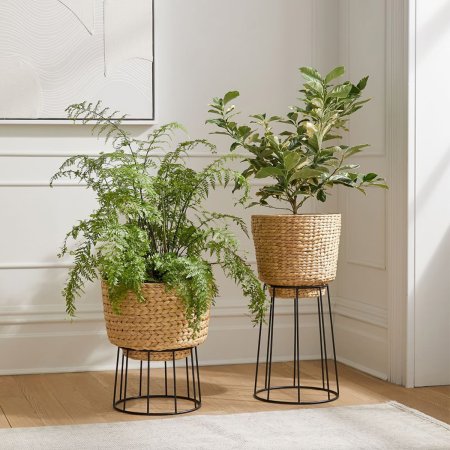We may earn revenue from the products available on this page and participate in affiliate programs.
Patience is a virtue, particularly when it comes to caring for houseplants. While some, like the monstera, seem to grow in the blink of an eye, others prefer to go at their own pace. The philodendron gloriosum is one of those leisurely types—but the wait is totally worth it. Unlike other philodendrons, which boast similar cordate (or heart-shaped) leaves, this one doesn’t have climbing or vining tendencies. Instead, its giant, velvet-like leaves, which can take more than a month to open up, creep closer to the ground.
“It’s loved for its pink margins, which is a fancy term for the leaf edges,” says Gabby Santiago, a plant-care specialist and horticulturist at Rooted. The pink fades over time, but as the leaves grow slowly to full size, they form bold white veins. “The contrast is so breathtakingly beautiful,” she adds. Native to Colombia, the philodendron gloriosum favors high humidity and warm temperatures (never below 55 degrees), so the closer you can mimic its home, the happier your greenery will be. Here, Santiago shares a few handy tips for keeping your slow-growing bud alive and thriving.
Don’t Let It Sunbathe
“They can tolerate a little bit of direct sunlight if you’re really careful, but they’re just not used to it,” says Santiago. Instead, position your philodendron in a place that gets medium to bright indirect light. Plants can get sunburned just like humans, she notes. If you leave this plant in a sunny spot for too long, you’ll start to see the warning signs: pale discoloration and black crisp markings on the leaves.

Keep a Hydration Schedule
When it comes to watering tropical plants, Santiago’s rule of thumb is to give them a thorough drink. You’ll know your plant is thirsty when the top 2 inches of soil is fairly dry. “You never want to let it completely dry out, but you also don’t want it to be too moist—otherwise you risk root rot,” she says.
Avoid the Most Common Mistake
Overwatering is the main killer of these types of plants, so it’s better not to overdo it. Also, the quality of your H2O is just as important as the quantity. Santiago recommends steering clear of tap water, which can leave chemical burns on this sensitive species’s leaves. One alternative to purchasing gallons of distilled water is to fill your can up a week before you know you need to do rounds, allowing the harmful toxins to evaporate.

Use Well-Draining Soil
Unlike its relatives that love to hang from ceilings or the tops of shelves and climb down, this philodendron is best when situated on the ground and planted in well-draining soil. If your plant mix doesn’t come with perlite in it, Santiago recommends adding it, as this allows oxygen to flow to the roots. Also, consider sticking a moss pole or plank of wood in the pot. This plant can get top-heavy, and the branches might snap if they’re not supported.
Don’t Restrict It—In the Pot or the Room
A pot with holes on the bottom is key to warding off root rot. If you don’t have a container with drainage, put an absorbent surface on the base of the planter, such as lava rocks. (We have a handy potting guide if you’re a first-time plant parent.)
And be sure to give it plenty of room to grow. It won’t need an entire corner right away, but this variety can reach up to 3 feet tall, so treat it like you would a tree. We recommend a pot with a stand to accentuate the scale of the giant leaves and lean into the blush edges with a coordinating planter. Then just sit back, wait, and behold it in all its unhurried glory.




